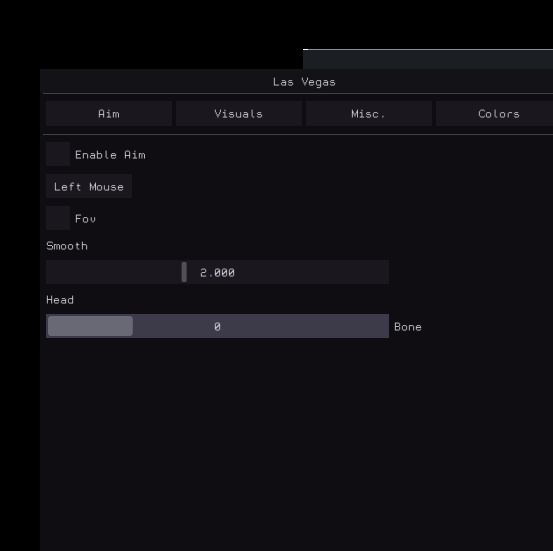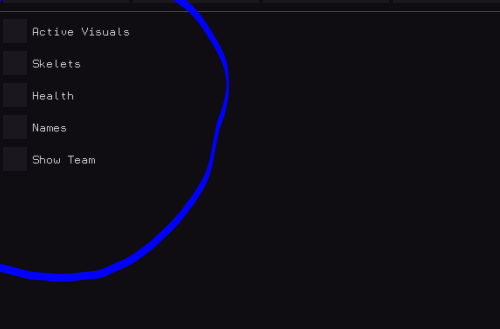This is not cheat JUST UI To render anything you need to call original SDL GL SwapWindow before you actually call SDL GL MakeCurrent (with original context as one of the arguments).
Achieving visual output hinges on a sequence of steps. The crux lies in initially invoking the original SDL_GL_SwapWindow function, and subsequently engaging SDL_GL_MakeCurrent with the original context as one of its parameters.
Furthermore, integration of glFlush() at the conclusion of your customized SDL_GL_SwapWindow function is indispensable. This strategic maneuver serves to eliminate any lingering flicker, heightening the coherence and fluidity of the display.
For a comprehensive understanding of the IMGUI paradigm's foundational principles, delve into the Wiki's "About the IMGUI Paradigm" segment. The IMGUI framework operates with the intent of mitigating redundant state duplication, synchronization, and retention from the user's vantage point. It champions an approach that is notably less error-prone, marked by reduced code volume and a diminished likelihood of bugs, particularly when contrasted with conventional retained-mode interfaces. A defining hallmark of IMGUI lies in its capacity to craft dynamic user interfaces.
Dear ImGui, in its orchestration, generates vertex buffers and command lists, which can be seamlessly incorporated into your application's rendering pipeline. The associated draw calls and state transitions requisite for rendering are kept at a minimal level. Notably, the independence of Dear ImGui from graphics state empowers you to invoke its functions anywhere within your codebase. This versatility extends to the midst of algorithms or the heart of the rendering process. The examples/ folder in the repository furnishes sample applications that offer guidance on the integration of Dear ImGui into your existing codebase.
A common misconception lies in conflating immediate mode GUI with immediate mode rendering, often leading to the erroneous assumption of inundating your driver/GPU with an abundance of inefficient draw calls and state transitions as the GUI functions are invoked. However, this is decidedly not the trajectory Dear ImGui pursues. The framework engenders vertex buffers and a succinct list of draw call batches. It abstains from direct GPU interaction. These draw call batches are inherently optimized, and their rendering can be deferred to a later point in your application, or even executed remotely.
For most platforms and C++ implementations, a harmonious coalescence of the imgui_impl_xxxx backends should be possible without any alterations. For instance, combining imgui_impl_win32.cpp and imgui_impl_dx11.cpp can offer a seamless integration. If your engine is primed to operate across diverse platforms, opting for multiple imgui_impl_xxxx files instead of rewriting them serves as an astute strategy. Not only does this streamline the integration process, but it also facilitates swift implementation of Dear ImGui. Subsequently, you can opt to reconfigure a distinct backend through your custom engine functions at a later juncture, should the need arise.
The assimilation of Dear ImGui within your bespoke engine rests on three pivotal steps:
- Establishing connectivity for mouse, keyboard, and gamepad inputs.
- Facilitating the upload of a solitary texture to your GPU or rendering engine.
- Furnishing a render function that's adept at texture binding and rendering of textured triangles.
The examples/ folder within the repository showcases applications that precisely fulfill these prerequisites. For a seasoned programmer versed in these concepts, the endeavor of integrating Dear ImGui within your custom engine should transpire within a span of fewer than two hours. Dedicate time to perusing the FAQ, comments, and a selection of examples/ applications to ensure comprehensive comprehension.
- Install the SDL2 library with Homebrew:
brew install sdl2- Open project in XCode.
- Build the project.
- Inject the lib. (for example with osxinj)
This program is strictly designed for educational purposes exclusively.
Under the stipulations of section 107 of the Copyright Act 1976, the doctrine of "fair use" permits the utilization of copyrighted material for an array of purposes, encompassing critique, commentary, news reporting, teaching, scholarship, education, and research.

